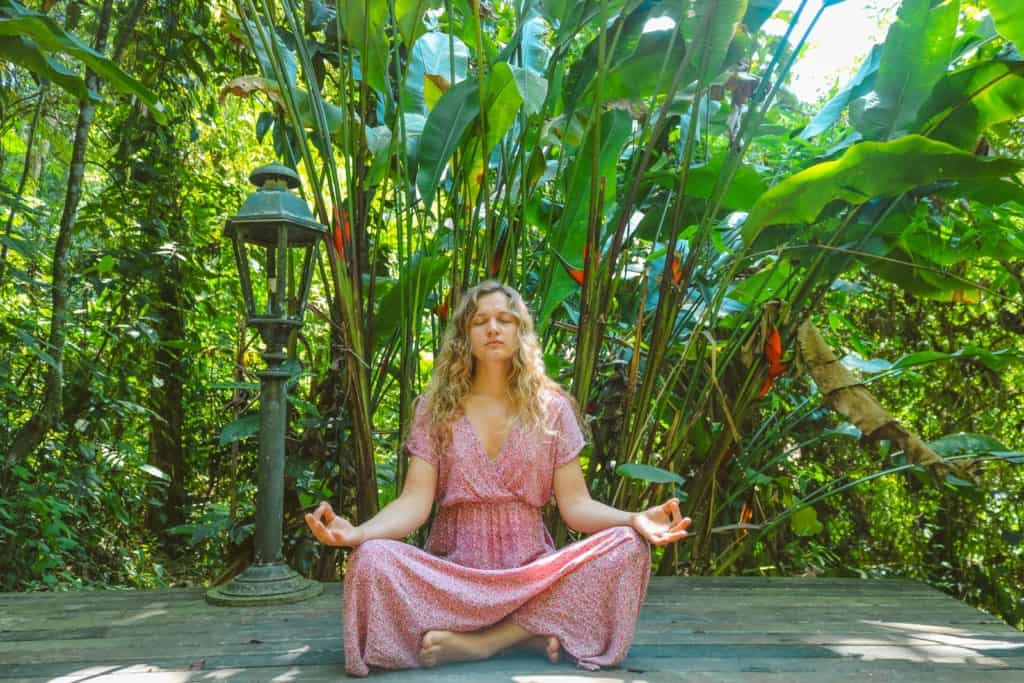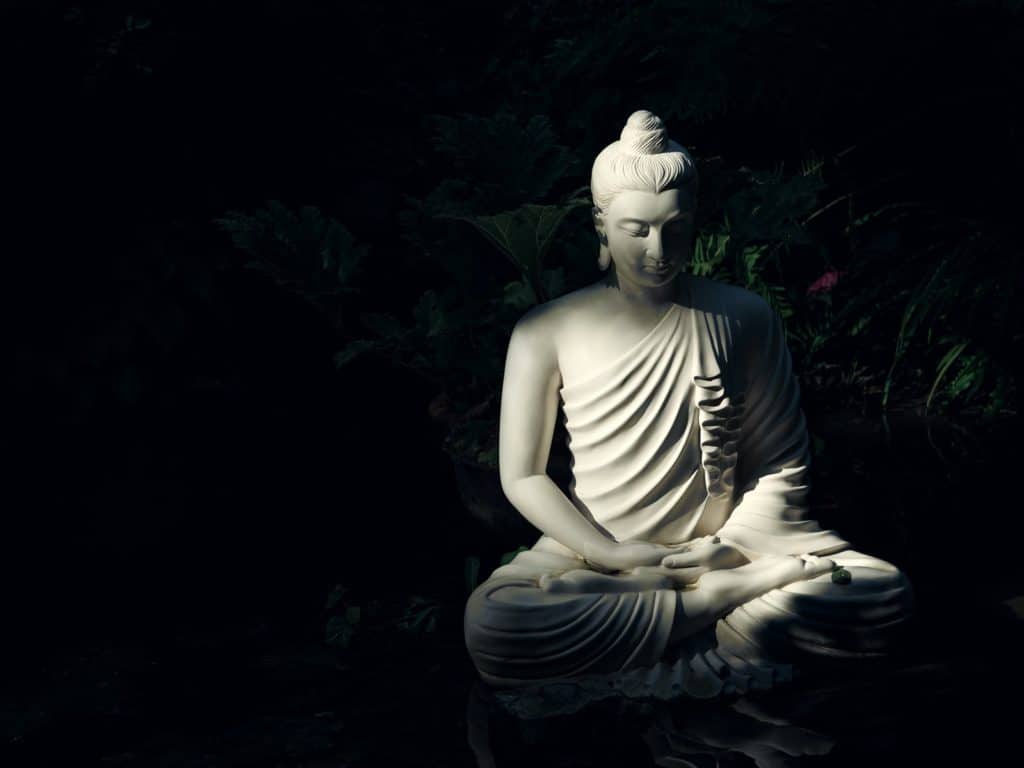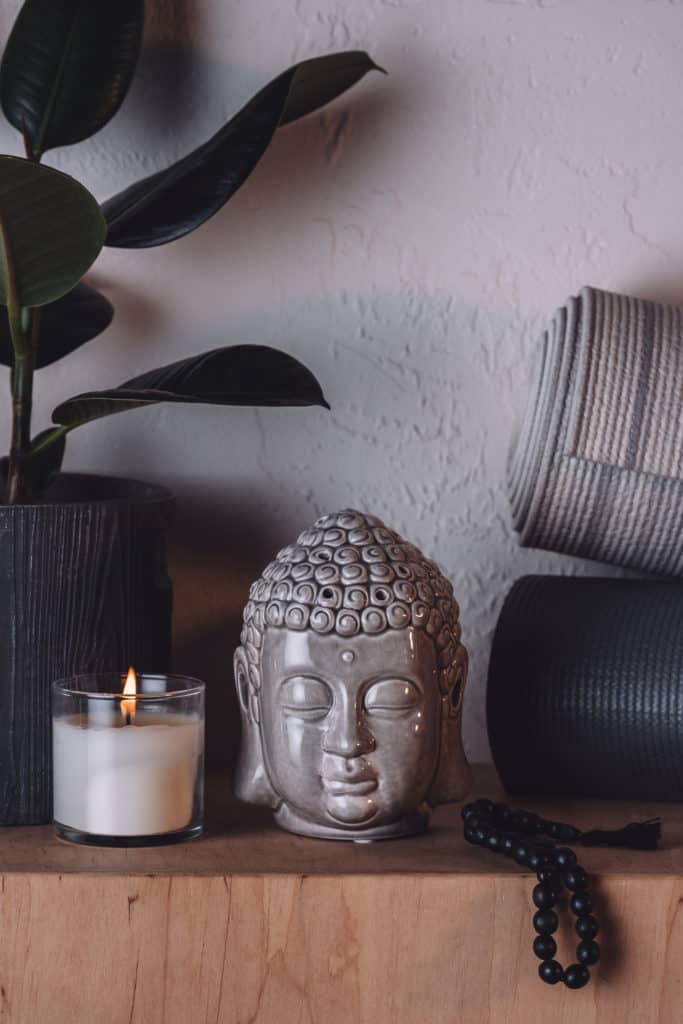This post may contain affiliate links. If you click one and make a purchase, I earn a small commission at no extra cost to you. It helps support the site so I can continue to offer great content to you!

The popularity of meditation has skyrocketed in recent years. More and more people are turning to this tool to help live a happy, healthy, and balanced life. It is free, can be practiced anywhere at any time, and requires no particular skills. The article below is perfect if you are considering adding the practice of meditation into your life. Therefore, let’s jump in and discuss why and how to meditate daily.
Where does meditation come from
Meditation has been around for thousands of years. Some archeologists date meditation to 5000 BCE! Furthermore, researchers have found old written records in India from around 1500 BCE referencing the practice of Dhyāna or Jhāna which is commonly known as meditation. It is believed to have started in India and later appeared in China around 600 or 500 BCE.

The original practice was deeply rooted in religious beliefs. It is not until the 12th century AD that the term meditation started to actually be used. Eventually, the practice started spreading to the western world in the 1700s. At that point, meditation started to be more disassociated from religion. By the 1960s and 1970s, meditation was being studied by researchers further disconnecting it from any particular religion and increasing its accessibility to a broader range of people.
What is meditation
Meditation is a relatively simple technique to help individuals achieve a better state of awareness and focus. It is not something we do, it is something we become, a state of mind. One goal of the practice is to train the mind to remain in the present and let go of past or future thoughts. Ultimately, the purpose is to develop a better sense of mindfulness and be able to carry it into all conscious moments of our lives.
Contrary to what many believe, meditation is not about emptying the mind. It is about being aware of the thoughts in our minds. It is acknowledging the state of our mind on that day and not getting involved with our thoughts. Rather than trying to control our thoughts, we should be looking for gaps between our thoughts and appreciating the stillness of those moments.
Benefits of meditation
By learning how to meditate daily, you can reap many benefits that can have a huge impact on your life.
- Improve self-awareness, clarity, attention and focus
- Better stress management and ability to be and remain calm
- Better sleep quality especially when practiced at night
- Develop a broader perspective of life events
- Promote creativity and happiness
- Increase your emotional well being
- Enhance your sense of empathy
- Some research suggests meditation can help you manage anxiety, provide headache relief and even help manage the symptoms of many illnesses.
Additionally, the practice appears to have many neurological benefits that scientists are continuously researching. As a result, they are confirming that meditation does produce notable changes in your most important organs.
With all these outstanding benefits, no wonder meditation is becoming so mainstream. Let’s now learn about the different types of meditation.
Types of meditation
There are several different types of meditation. They all have some overlaps and their intent is often quite similar. In this blog post, we will focus on 5 of them.
1. Mindfulness
This form of meditation originated from Buddhism. The purpose of mindfulness meditation is about achieving a state of awareness, calm, and relaxation. Most people practicing mindfulness meditation are hoping to gain better self-understanding and increase their ability to remain in the present. The individual typically anchors the practice on an object or around regulating the breath. In this form of meditation, you observe your thoughts without judgment. You become aware of them but do not engage or react to them.
2. Spiritual
This form is usually more closely related to a religious belief. The purpose is often to connect to a higher power or the divine. Additionally, the individual seeks to deepen the understanding of the religious or spiritual meaning and fully connect with his true self.
3. Focused
In a focused meditation, your intent is to clear the mind and increase focus and attention. Many individuals will chose this form also in the hope of releasing stress and tension. This is often done by using an object, sound, or mantra during the meditation. During this meditation, you perform an action which is to focus on something very specific. For example, the subject might be staring at a flame, listening to a rhythmic sound like a gong, or repeating a word or sentence.
4. Movement

Movement meditation includes the obvious practice of yoga or tai-chi for example. However, it can be practiced using other forms of movement like walking or gardening. In this active meditation, you focus on the connection between your body and mind through repetitive and intentional movements. People who struggle with stillness or find it difficult to find time to meditate often gravitate to movement meditation.
5. Transcendental
This type of meditation is usually taught by a teacher in a 1:1 setting. The goal of transcendental meditation is in line with the other forms of meditation discussed above. This practice also uses mantras. However, the mantra is unique to the individual and is provided by the teacher. Lastly, transcendental meditation has been the most studied form of meditation and many believe that this is the most effortless type.
Tips for beginners
Be open minded
Try to go into this journey with an open mind and no specific goals. Be ready to simply observe how the practice makes you feel both mentally and physically. Take a look at how you feel before and after meditating and note if you see a difference. Also, it can be a good idea to journal about the experience while you learn how to meditate daily and track how the practice impacts you over time.
Create a meditation space
It is important to have a clean and quiet place for your meditation. For example, this area should be comfortable and allow you to feel relaxed. Some people will customize the space adding ambiance lighting, candles, spiritual objects, and meditation pillows or blankets. No need to invest however, try to make the space your own. Lastly and more importantly, make it a place you want to return to every day.

Establish a routine
Setting a routine for when and for how long you will meditate every day is key to being successful. You have likely heard before that it takes 21 days (or 30 or 66 it turns out) to create a habit. The habit of meditation is no different. Find the best time for you and stick to it. As you start to feel the many benefits in your daily life, it will become easier to follow and even crave it as part of your every day.
Try different types
As a beginner learning how to meditate daily, be open to trying different kinds of meditation. Your first choice won’t necessarily be the right choice for you. Additionally, you might realize that each type of meditation provides you with different benefits. Based on what is going on in your life on a certain day, you might receive more benefits from one type versus another.
Consider guided meditation
There are many great apps out there to help you learn and navigate all forms of meditation. A favorite is the insight timer app. It offers many products and services such as workshops, recorded practices for yoga, sleep, and meditation as well as timers for silent or non-guided meditation. The app also allows you to track how you are feeling before and after the practice.
In conclusion
This article was all about learning why and how to meditate daily. 350 million people cannot all be wrong! Meditation is amazing and has been a pillar of self-awareness, calm, and happiness in many societies for thousands of years. Try it for yourself.
I hope this article was helpful. As always, leave a comment or reach out if you have feedback or thoughts you would like to share.
Namaste,
Cat xx